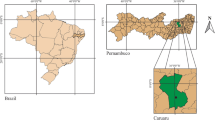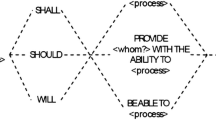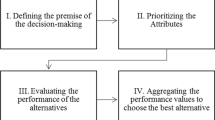Abstract
The objective of this study is to propose and apply a novel approach to develop a drinking water quality index that enables water managers to routinely identify the vulnerabilities in a distribution system (DS) while taking into account the priorities of water managers and operators. Here, we propose an innovative approach based on the participation of eight researchers and water managers. The input from these participants was included through a combination of the Delphi and MACBETH (Measuring Attractiveness by a Categorical-Based Evaluation Technique) methods, which were applied to an index developed using fuzzy logic. The index was then validated by conducting sensitivity and comparative analyses on a database from field sampling campaigns conducted in various small municipal DSs in two Canadian provinces: Quebec and Newfoundland and Labrador. Finally, the drinking water quality index was applied to a database of the DS in Quebec City, Canada. Sensitivity and comparative analyses revealed that the developed index could allow for the characterization of water sample quality and could prove useful for prioritizing interventions in the DS. The index was also useful for representing the spatial variability of water quality, and provided nuanced information about water quality, especially when the water quality parameter values complied with guidelines and regulations. These results provide a transferable and integrated approach for developing customized drinking water quality indices. This study will help pave the way for water quality managers to better prevent episodes of possible water quality deterioration.



Similar content being viewed by others
References
Abbasi, T., & Abbasi, S.A. (2012) Water quality indices. Elsevier, Amsterdam, The Netherlands.
Akter, T., Jhohura, F. T., Akter, F., Chowdhury, T. R., Mistry, S. K., Dey, D., et al. (2016). Water quality index for measuring drinking water quality in rural Bangladesh: a cross-sectional study. Journal of Health, Population and Nutrition, 35(1), 4.
Barua, A., Mudunuri, L. S., & Kosheleva, O. (2014). Why trapezoidal and triangular membership functions work so well: towards a theoretical explanation. Journal of Uncertain Systems, 8.
Böhringer, C., & Jochem, P. E. P. (2007). Measuring the immeasurable—a survey of sustainability indices. Ecological Economics, 63, 1–8. https://doi.org/10.1016/j.ecolecon.2007.03.008.
CCME (1999) Canadian water quality guidelines for the protection of aquatic life: Canadian Water Quality Index 1.0 Technical Report. Winnipeg, Manitoba: Canadian environmental quality guidelines. ISBN 1-896997-34-1
Chang, N. B., Chen, H. W., & Ning, S. K. (2001). Identification of river water quality using the fuzzy synthetic evaluation approach. Journal of Environmental Management, 63(3), 293–305.
Costa, C. A. B. E., & Vansnick, J. C. (1999) The MACBETH approach: basic ideas, software, and an application. In Advances in decision analysis (pp. 131-157). Springer, Dordrecht.
Coulibaly, H. D., & Rodriguez, M. J. (2003). Spatial and temporal variation of drinking water quality in ten small Quebec utilities. Journal of Environmental Engineering and Science, 2, 47–61.
Delpla, I., Proulx, F., & Rodríguez, M. J. (2020). A methodology to prioritize spatio-temporal monitoring of drinking water quality considering population vulnerability. Journal of Environmental Management, 255, 109869.
Diamond, I. R., Grant, R. C., Feldman, B. M., Pencharz, P. B., Ling, S. C., Moore, A. M., & Wales, P. W. (2014). Defining consensus: a systematic review recommends methodologic criteria for reporting of Delphi studies. Journal of Clinical Epidemiology, 67(4), 401–409.
Francisque, A., Rodriguez, M. J., Sadiq, R., Miranda, L. F., & Proulx, F. (2009). Prioritizing monitoring locations in a water distribution network: a fuzzy risk approach. Journal of Water Supply: Research and Technology-AQUA, 58(7), 488–509.
Gouvernement du Québec (2018) Regulation on the quality of drinking water Règlement sur la qualité de l’eau potable. Gazette Officielle du Québec.
Gouvernement du Québec, (2001). Regulation on the quality of drinking water (Règlement sur la qualité de l’eau potable). Government of Québec, Québec, Canada L.R.Q, c. Q-2, r. 18.1.1.
Health Canada, (1995). Guidelines for Canadian drinking water quality: guideline technical document–temperature
Health Canada. (2017). Guidelines for Canadian drinking water quality—summary table. Water and Air Quality Bureau. Health Canada, Ottawa, Ontario: Healthy Environments and Consumer Safety Branch.
Horton, R. (1965). An index number system for rating water quality. Journal - Water Pollution Control Federation, 37(3), 300–306.
Hurley, T., Sadiq, R., & Mazumder, A. (2012). Adaptation and evaluation of the Canadian Council of Ministers of the Environment Water Quality Index (CCME WQI) for use as an effective tool to characterize drinking source water quality. Water Research, 46(11), 3544–3552.
Kallidaikurichi, S., & Rao, B. (2010). Index of drinking water adequacy for the Asian economies. Water Policy, 12(S1), 135–154.
Lavoie, R., Deslandes, J., & Proulx, F. (2016). Assessing the ecological value of wetlands using the MACBETH approach in Québec City. Journal for Nature Conservation, 30, 67–75.
Legay, C., Rodriguez, M. J., Sérodes, J. B., & Levallois, P. (2010). The assessment of population exposure to chlorination by-products: a study on the influence of the water distribution system. Environmental Health, 9(1), 59.
Linstone, H.A., & Turoff, M. (Ed.). (1977) The Delphi method: techniques and applications. Addison-Wesley.
Lu, R.-S., Lo, S.-L., & Hu, J.-Y. (1999). Analysis of reservoir water quality using fuzzy synthetic evaluation. Stochastic Environmental Research and Risk Assessment, 13, 327–336.
Misaghi, F., Delgosha, F., Razzaghmanesh, M., & Myers, B. (2017). Introducing a water quality index for assessing water for irrigation purposes: a case study of the Ghezel Ozan River. Science of the Total Environment, 589, 107–116.
Mohebbi, M. R., Saeedi, R., Montazeri, A., Vaghefi, K. A., Labbafi, S., Oktaie, S., et al. (2013). Assessment of water quality in groundwater resources of Iran using a modified drinking water quality index (DWQI). Ecological Indicators, 30, 28–34. https://doi.org/10.1016/j.ecolind.2013.02.008.
Mukate, S., Wagh, V., Panaskar, D., Jacobs, J. A., & Sawant, A. (2019). Development of new integrated water quality index (IWQI) model to evaluate the drinking suitability of water. Ecological Indicators, 101, 348–354.
Musa, H. D., Yacob, M. R., Abdullah, A. M., & Ishak, M. Y. (2015). Delphi method of developing environmental well-being indicators for the evaluation of urban sustainability in Malaysia. Procedia Environmental Sciences, 30, 244–249. https://doi.org/10.1016/j.proenv.2015.10.044.
OECD. (2008). Handbook on constructing composite indicators: methodology and user guide. France: OECD.
Ott, W. (1978) Water quality indices: a survey of indices used in the United States. USEPA, ETA-60074-78-005.
Ouyang, Y., Nkedi-Kizza, P., Wu, Q. T., Shinde, D., & Huang, C. H. (2006). Assessment of seasonal variations in surface water quality. Water Research, 40(20), 3800–3810.
Ozdemir, O. N., & Buyruk, T. (2018). Effect of travel time and temperature on chlorine bulk decay in water supply pipes. Journal of Environmental Engineering, 144(3), 04018002. https://doi.org/10.1061/(ASCE)EE.1943-7870.0001321.
Rochette, S., Pelletier, G., Bouchard, C., & Rodriguez, M. (2017). Variability of water residence time and free chlorine and disinfection by-product concentrations within a residential neighborhood. Journal of Water Supply: Research and Technology-AQUA, 66(4), 219–228.
Rodrigues, T. C. (2014). The MACBETH approach to health value measurement: building a population health index in group processes. Procedia Technology, 16, 1361–1366.
Rodriguez, M. J., Sérodes, J., Levallois, P., & Proulx, F. (2007). Chlorinated disinfection by-products in drinking water according to source, treatment, season and distribution location. Journal of Environmental Engineering and Science, 6, 355–365.
Sadiq, R., & Rodriguez, M. J. (2004). Disinfection by-products (DBPs) in drinking water and predictive models for their occurrence: a review. Science of the Total Environment, 321(1-3), 21–46.
Scheili, A., Rodriguez, M. J., & Sadiq, R. (2015a). Development, application, and sensitivity analysis of a water quality index for drinking water management in small systems. Environmental Monitoring and Assessment, 187, 685–700.
Scheili, A., Rodriguez, M. J., & Sadiq, R. (2015b). Seasonal and spatial variations of source and drinking water quality in small municipal systems of two Canadian regions. Science of the Total Environment, 508, 514–524.
Shankar, B. S., & Raman, S. (2019). A novel approach for the formulation of modified water quality index and its application for groundwater quality appraisal and grading (pp. 1–12). Human and Ecological Risk Assessment: An International Journal.
SPSS Inc. Released. (2004). SPSS for Windows, Version 13.0. Chicago, SPSS Inc. 2004.
Statistics Canada. (2017). Québec, V [Census subdivision], Quebec and Québec, TÉ [Census division], Quebec (table). Census Profile. 2016 Census. Statistics Canada Catalogue no. 98-316-X2016001. Ottawa. Released November 29, 2017. https://www12.statcan.gc.ca/census-recensement/2016/dp-pd/prof/index.cfm?Lang=E. Accessed 1 Aug 2020.
Sutadian, A. D., Muttil, N., Yilmaz, A. G., & Perera, B. J. C. (2017). Using the analytic hierarchy process to identify parameter weights for developing a water quality index. Ecological Indicators, 75, 220–233.
Turoff, M. (Ed.). (1977) The Delphi method: techniques and applications. Addison-Wesley.
USEPA, 2001. National primary drinking water standards. United States Environmental Protection Agency, document #EPA 816-F-01-007.
USEPA (2018) 2018 edition of the drinking water standards and health advisories tables. Office of Water, U. S. Environmental Protection Agency, Washington, DC.
Ville de Québec (2020) Bilan annuel de la qualité de l’eau potable pour la période de 1er janvier au 31 décembre 2019
Wepener, V., Van Vuren, J. H. J., Du Preez, H. H., & Kohler, A. (1992). The development of an aquatic toxicity index as a tool in the operational management of water quality in the Olifants River (Kruger National Park). Koedoe, 35(2), 1–9.
Wu, Z., Wang, X., Chen, Y., Cai, Y., & Deng, J. (2018). Assessing river water quality using water quality index in Lake Taihu Basin, China. Science of the Total Environment, 612, 914–922.
Yan, W., Li, J., & Bai, X. (2016). Comprehensive assessment and visualized monitoring of urban drinking water quality. Chemometrics and Intelligent Laboratory Systems, 155, 26–35.
Zadeh, L. A. (1988). Fuzzy logic. Computer, 21(4), 83–93.
Zardari, N. H., Ahmed, K., Shirazi, S. M., & Yusop, Z. B. (2015). Weighting methods and their effects on multi-criteria decision making model outcomes in water resources management. Springer Briefs in Water Science and Technology. https://doi.org/10.1007/978-3-319-12586-2.
Acknowledgements
We acknowledge the City of Quebec for providing water quality data. We are especially grateful to the panellists that agreed to participate in this study.
Funding
This study received funding from the National Research Council of Canada.
Author information
Authors and Affiliations
Corresponding author
Additional information
Publisher’s note
Springer Nature remains neutral with regard to jurisdictional claims in published maps and institutional affiliations.
Electronic supplementary material
ESM 1
(DOCX 21 kb)
Rights and permissions
About this article
Cite this article
Scheili, A., Delpla, I. & Rodriguez, M.J. Development of a drinking water quality index based on a participatory procedure using mixed multicriteria methods. Environ Monit Assess 192, 558 (2020). https://doi.org/10.1007/s10661-020-08516-7
Received:
Accepted:
Published:
DOI: https://doi.org/10.1007/s10661-020-08516-7




